Text

4 notes
·
View notes
Text
Wait... the principal has the same last name as Nano and the professor???
...um, how common a name is "Shinonome" in Japan, anyway? Is it like Smith or Brown or Miller here in America?
#nichijou#nano shinonome#hakase shinonome#principal shinonome#i'm on the last episode and it just now hit me that he has the same name#but like...#if they're related then why hasn't he said anything to nano about it?
2 notes
·
View notes
Text
the type of shit i do at 1:20am in the morning instead of studying

i rewatched random parts of alien stage as well. then listened to ai covers of akito shinonome singing gangnam style. and other stuff. i should sleep probably. i have some meeting with my schools principal cus im part of the student leadership team. n i havent finished the presentation with my group for that lolol im cooked.
even tho this is a miku cover n its silly i rmbr listening to bohemian rhapsody for the line i related to so so much it hurt.
i dont wanna die, sometimes wish i'd never been born at all...
the first one has changed a bit. a lot.
5 notes
·
View notes
Text
I don't know what this year April Fools Project Sekai gonna make, so I'm making this before it's happens for the Nexo Knights.
On April Fools 2022, Project Sekai make an April Fools unit. Which means each members of said units switch with another member of their units and also recreated their group name. Which the following Nexo Knights are going to which units? Because of this being an April Fools, I just used the wheel, because in now way I understand what in the world SEGA thinking.
Clay will be in Kyujitsu, Shumijin Doushi de. (Don't look at me, blame the wheel). With the group members; Mochizuki Honami, Hanasato Minori, Kusanagi Nene, and Akiyama Mizuki. Honami and Clay might get along. Minori might be admire Clay's hard work and try to follow suit what he do. Nene might get along with him but be a little freak out or nervous if he ever drop his polite and gentle expression.
Macy will be in Happiness Sentai SaniSani☆Wonder! With the group members; Kiritani Haruka, Azusawa Kohane, Otori Emu, and Asahina Mafuyu. Macy might get along with Haruka, who reminds her of Clay. Macy might try to help Kohane overcome her fear and be more self-confident in herself. She also get along with Emu but can't always keep up with her energy. She don't know we'll about Mafuyu, either Mafuyu is acting or she isn't really acting.
Aaron will be in YUME YUME JUMP! With the group members; Hinomori Shiho, Hinomori Shizuku, Shiraishi An, and Yoisaki Kanade. He and Shiho might get along but Shiho had to keep up with his reckless. He might be a reckless but he did help Shizuku to understand some certain thing she might not get, so he get along with her. He is very energetic and try to get Kanade to be one as well, it did not end well.
Lance will be in Fantasista SQUAD. With the group members; Shinonome Akito, Aoyagi Toya, Tenma Tsukasa and Kamishiro Rui. Akito might not stand with Lance, thinking it's another Tsukasa. Toya might admire Lance, with how he admire Tsukasa (no baby, don't admire!). They get along, the star and the actor/knight get along so well. Lance might be a little overreacted to Rui's shenanigans.
And lastly Axl with Aoharu/friends. He might be playing bass guitar. With the group members; Hoshino Ichika, Tenma Saki, Momoi Airi, and Shinonome Ena. Ichika and Saki might be impressed with Axl look and him playing the bass, remind them so much of Shiho. Airi might try to get Axl to eat less food but of course, fail and just let him. Axl definitely like Ena's art, just like Ena likes Axl's cooking.
In April Fools 2023, the event brought all units into a school-themed world. Two of the original in-game schools were removed temporarily, making room for “MIKUdemy,” which followed “Dayo-Sensei” (Mikudayo’s) principal service. Yoisaki Kanade and all members of the VIRTUAL SINGERs received new models wearing school uniforms. As Dayo-Sensei, Mikudayo wore a bushy mustache, round glasses, and a gray suit-and-tie. Like the 2022 April Fools event, Robo-Nene and Mikudayo (as Dayo-Sensei) fly over the overworld map. The only areas that triggered conversations were the entirety of MIKUdemy and the center square, rendering all other areas obsolete.
There are 4 different class with one each member from each units in it. I am not sure if Nexo Knights should have their own class but they also need a vocaloid for their class, and both Kagamine also in the same class same goes for Luka and MEIKO, so I just put them in those said 4 class.
Clay will be in Cautious Heart. The classmates are Mochizuki Honami, Azusawa Kohane, Kiritani Haruka, Tenma Tsukasa and Asahina Mafuyu. The Vocaloid classmates are Megurine Luka and MEIKO.
Macy will be in Solid Heart. The classmates are Hinomori Shiho, Momoi Airi, Shinonome Akito, Kusanagi Nene, and Shinonome Ena. The Vocaloid classmates is KAITO.
Aaron and Lance will be in Passion Heart. You can't separate these two, they even get along when they were in Knight's Academy. The classmates are Hanasato Minori, Tenma Saki, Shiraishi An, Kamishiro Rui and Akiyama Mizuki. The Vocaloid classmates are Kagamine Rin and Kagamine Len.
And lastly Axl will be in Pure Heart. The classmates aren't technically seems like innocent like Emu, but it's more likely depends on how kind and caring they are. The classmates are Hoshino Ichika, Hinomori Shizuku, Aoyagi Toya, Otori Emu, and Yoisaki Kanade. The Vocaloid classmates is Hatsune Miku.
That is all. When these April Fools 2024 will came, I will see what the event they have and reblog this post again about it.
6 notes
·
View notes
Text

Name
Word Count: 652
Prompt: "Kemonogami"
Featured Characters: Kaito Shinonome & Dracmon
A/N: I can't begin to trace how exactly I came up with this one. Frankly, I find Dracmon to be a really amusing partner, especially in relation to Kaito. Their interactions are some of my favorite, especially when Dracmon sasses the hell out of Kaito and our little blond boy knows he's right. So I figured... who better to have a conversation about what exactly the Kemonogami are than these two? There wasn't as much sass from Dracmon as I originally intended, but I tend toward the sappy and sentimental anyway. I hope that's alright, haha.
@surviveweek
Kaito had been giving Dracmon a staredown for longer than was probably healthy. Dracmon didn't seem to mind, at the very least, choosing instead to sit there grinning. The others thankfully didn't find the little clown-like creature creepy, though Kaito certainly had at first. Once it became clear Dracmon was going to help him find Miu, the feeling went away. It was funny how that worked. Arukenimon was just as creepy, if not more so, than Dracmon, but they inspired different reactions. Probably because one of them had outright tried to kill him.
"Dracmon," he finally said. "What even are you?"
In the first movement he'd made since they'd started their little staring contest, Dracmon tilted his head. "What do you mean?"
"I mean, is there a name for creatures like you? And not Dracmon," Kaito said hurriedly, because he knew that Dracmon would probably try to state the obvious. "I mean for all of you. There's gotta be something you refer to yourselves as."
"Not really," his partner said with a shrug. "I mean, we all have different names, like Agumon or Falcomon. And there are other Agumons and Falcomons somewhere, I'm sure. I don't think anyone ever decided on a name for all of us. We're too divided for that, I guess."
That made Kaito frown. It seemed endlessly sad, to not have a term to unite them all. Maybe Arukenimon and Dracmon weren't on the same wavelength, but neither was Kaito on the same wavelength as the principal of his school. They were both still human! Although, if he were in Dracmon's position, he wasn't sure he wanted to be considered similar to Arukenimon. Especially since they clearly didn't agree on what to do about human children.
He tried something else. "So… have you ever heard the word 'Kemonogami'?"
"Kemono…gami?" Dracmon scratched his head with one of his nails. "Can't say I'm familiar with it."
"Huh. Apparently, that's the name we have for you. Sounds a little too fancy to me, though." Kaito rested his chin on his fist. He didn't have any better ideas, though. Kemonogami seemed to be the best word they had, not that it made any sense to someone like him. "Unless you have any better ideas?"
"I like 'partner.'" Dracmon was grinning again, though that seemed to be his default expression. He really only seemed to frown whenever Kaito was doing something particularly stupid. Which was a lot more often than he was willing to admit. "I know that doesn't apply to all of us, but at least when you refer to me, Kaito, I really like the idea of being your 'partner.'"
The candidness struck him, and Kaito laughed a little bit. He wasn't much of a hugger, but he almost wanted to hug Dracmon right on the spot. "I didn't know you were sappy, Dracmon."
"Eh, you bring it out in me," Dracmon teased, the grin on his face growing more genuine. "Someone has to keep you in check—who better than your Kemonogami partner?"
"Never say that again." Kaito let out a longer laugh this time. "That's such a mouthful!"
"Well so are your human names! Why aren't you Kaitomon or Miumon? Those are much better names!"
"I think you're biased."
"Maybe I am. But either way," Dracmon said, returning to his seriousness. "I'm gonna try my best to get you out of this, Kaito. Maybe I can survive in this world, but you won't do it on your own."
If there was any creature Kaito would have given the name "Kemonogami," it would be one like Dracmon. He and the other partner creatures deserved a fancy name. "Thanks, Dracmon. C'mon, we should go see if it's time for dinner yet."
"Ready when you are," Dracmon said. Kaito led the way back to the abandoned school building, but rather than following him, Dracmon was right at his side. Right where he belonged.
#digimon#digimon survive week#survive week#digimon survive#gen writes#digimon drabble#kaito shinonome#dracmon
15 notes
·
View notes
Text



tokisadame faculty
#nichijou#my ordinary life#principal shinonome#nakamura kana#takasaki manabu#sakurai izumi#spade shovels
72 notes
·
View notes
Photo


Nichijou Daihyakka - Kouchou-sensei (Principal) (Pg 27-28)
#kouchou-sensei#principal shinonome#nichijou#nichijou daihyakka#nichijou anime guide book#keiichi arawi#KyoAni
17 notes
·
View notes
Photo



When I first watched Nichijou, this joke sorta flew over my head.
But today at work, there was an all-hands meeting in the lunchroom and the VP of Engineering (basically the supervisor person for everyone at that office site) was giving everyone an update on the direction of the company and stuff, how he received some anonymous feedback about the company and he’d be taking steps to address them, and how the higher-ups would be reassigning him to a different role so that he could better help all of us.
And he asked if there were any questions.
There was a pause, and then a smiling guy standing in the middle of the audience spoke up: “Well, I just want to thank you for all of the great work you’ve done all these past years, we really appreciate it.”
And then the VP was like, “...Once again, I’m not leaving here, I’ll still help out in my new role, I just won’t be directly supervising you anymore, that’s all.”
And while everyone was laughing good-naturedly at that, I was thinking ohhh, now I get it.
#nichijou#principal shinonome#vice principal oura kousuke#gosh#vice principal is so petty#those two have some history I guess :P
0 notes
Text
Yet again ranking the 5 animes I’ve watched most recently
After losing the will to just sit down and watch it for quite a while, I’ve finally gotten through 5 anime series yet again, and, as is tradition for me by now, I’ve decided to just type out my thoughts and rankings of them, with my first two posts of this nature being here and here. As usual, this is just my personal thoughts, and the only other thing worth noting before I start is that, unlike last time, I do think everything listed here is at least decent on its own. With that, I’ll just get to it. 5. Robotics;Notes

Number of episodes: 22. Language options: dub and subs available. Streaming availability: Funimation. Robotics;Notes is an adaptation of a visual novel, which I actually just wrote a review on, which can be found here. Long story short, it’s the third entry in the Science Adventure series, the same series Steins;Gate is part of, unknown to most people, with Robotics;Notes technically being the sequel to it. Originally aired in 2012, the same year as the visual novel was released, and made by Production I.G, Robotics;Notes is in an interesting middle ground between the acclaimed and popular Steins;Gate animes and the downright awful and obscure Chaos;Head and Chaos;Child animes, and until 2020 was the only option those who didn’t speak Japanese had to experience it at all. Since I went into so much detail in said visual novel review, I’m mostly going to focus on how the anime holds up both by itself and as an adaptation. Ever since its creation nearly ten years ago, the dream of the Chuo Tanegashima High Robotics Research Club has been to finish Gunbuild-1, a lifesize recreation of Gunvarrel, the titular mecha of an insanely popular anime that’s credited with starting a “robot boom” within Japan, and the club’s current president, Akiho Senomiya, the little sister of the club’s founder, Misaki Senomiya, is extremely determined to see this dream achieved. Unfortunately for her, the club has fallen on hard times, with its funding being cut, its advisor being completely unreliable, and the few other members it has, namely Kaito Yashio, Subaru Hidaka, Junna Daitoku, and Kona Furugoori, aka Frau Koujiro, being quite difficult in their own ways, and often more than Akiho can handle. While Akiho puts her all into finally bringing the club to greatness, the otherwise apathetic Kaito finds himself involved with a mysterious AI called Airi, who exists within the augmented reality app IRUO. Airi’s creator, the deceased Kou Kimijima, turns out to have also created several AR annotations scattered throughout Tanegashima, titled the Kimijima Reports, which warn of a grand conspiracy that will utterly devastate humanity if unopposed. I’m not the most unbiased viewer, since I had played, and enjoyed, the visual novel months before watching this anime, but generally, it’s actually an enjoyable time. Some of Robotics;Notes’ biggest strengths were always its cast of characters and lighter tone, and for the most part, the anime preserves both well, keeping it mostly silly, but endearing early on. The artstyle actually matches up fairly well with the VN’s CGs, and the dub, which I watched just to spice things up, since I already knew the Japanese voice cast was quite good, is overall solid, with Clifford Chapin as Kaito, Lindsay Seidel as Akiho, and Monica Rial as Junna especially sticking out to me. As an adaptation, on the other hand, it falls short in quite a few places, namely when it comes to characterization. While obviously, no adaptation could feasibly fit in every detail from its source material, the Steins;Gate anime managed to preserve almost all of its cast’s characterization, whereas in Robotics;Notes, several characters lose prominent details to their backstories or personal conflicts, or act differently in scenes unrelated to that, making quite a few of them come off different. While instances of the latter case, such as Junna coming off as less shy and hesitant, don’t necessarily worsen anything for the most part, the former definitely does, as it makes the affected characters much less developed and interesting. Nobody suffers from this worse than Kaito himself, who loses most of his backstory, motivations, and arc, to the point of one of his best moments being changed from something intentional to completely accidental, with the end result making him come off as a completely different character, and an inferior one, at that. Additionally, around episode 16, the anime starts diverging pretty significantly from the VN, and not in ways that are improvements, to the point it even leaves a few otherwise preserved scenes in earlier episodes without context. Overall, I can imagine the Robotics;Notes anime still being a decent, if unremarkable watch on its own, and was certainly an interesting and fun way to reexperience the story, and definitely fares better than many visual novel adaptations, but I can’t quite say I’d recommend it. If Robotics;Notes interests you, the visual novel is very much preferred. 4. Nichijou
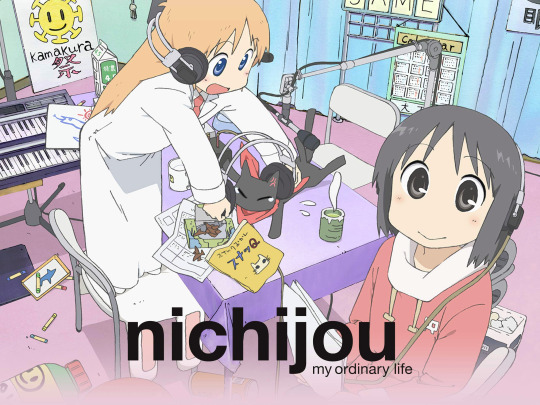
Number of episodes: 26. Language options: dub and subs available. Streaming options: Funimation. Here we have one of the most acclaimed anime comedies out there, an adaptation of Keiichi Arawi’s surreal sketch comedy manga series, produced by Kyoto Animation, a name that’ll be showing up here again later. Nichijou mainly focuses on two different trios of characters. There’s the ordinary high school girls Yuuko Aioi, a rather dim and reckless girl with terrible luck, Mio Naganohara, the most relatively normal one of the cast, whenever she’s not having explosive freak outs that involve beating people up, and Mai Minakami, a stoic girl who enjoys messing with people just for their reactions. On the other hand, there’s the far less ordinary Shinonome Laboratories trio of Professor Shinonome, an 8 year old girl who happens to be capable of building incredibly advanced machines, Nano Shinonome, a robot built by the Professor who desperately desires a normal girl more than anything, and Sakamoto, their pet cat who, thanks to a special scarf also made by the Professor, is capable of talking. The series focuses on their would-be ordinary lives, were it not for the seemingly daily chaos they get involved in, from witnessing the school principal wrestle a wild deer, to being trapped in an elevator for hours, to the school science teacher attempting to capture Nano for study. It also follows the antics of several other side characters, such Koujiro Sasahara, the seemingly upper class student who is actually just the son of a family of farmers, to Misato Tachibana, a very typical tsundere towards Sasahara, whose tsun side manifests as assaulting him with military-grade weapons, to little effect, to the equally quirky teachers of their school. Needless to say, it’s a very silly and chaotic series, and that’s exactly what makes it so memorable. The humor is pretty hit and miss in the first half of the series, but from episode 14 onwards, they thoroughly master it, with every episode having at least a few scenes that got me laughing. Beyond the silliness, though, the series actually has a lot of heart to it. There’s a few moments that change up the status quo, or even develop the characters just a bit, and some scenes are surprisingly sweet, if still played for laughs more often than not. There’s also a lot of continuity, which in later episodes often provide the punchlines to some of the best gags, which definitely encourages watching the whole series. The Japanese voice acting is fittingly crazy for each character, and the animation fits perfectly, as while the character designs are quite simple, there’s many would be mundane moments that have contrasting overly impressive and exaggerated animation that makes them very memorable. All in all, Nichijou is a very enjoyable series once it finds its groove, and about the only reason its not higher on my rankings is just because pure comedies aren’t really one of my favorite genres. Still, if you ever want a good laugh, you can’t go wrong with this. 3. Soul Eater
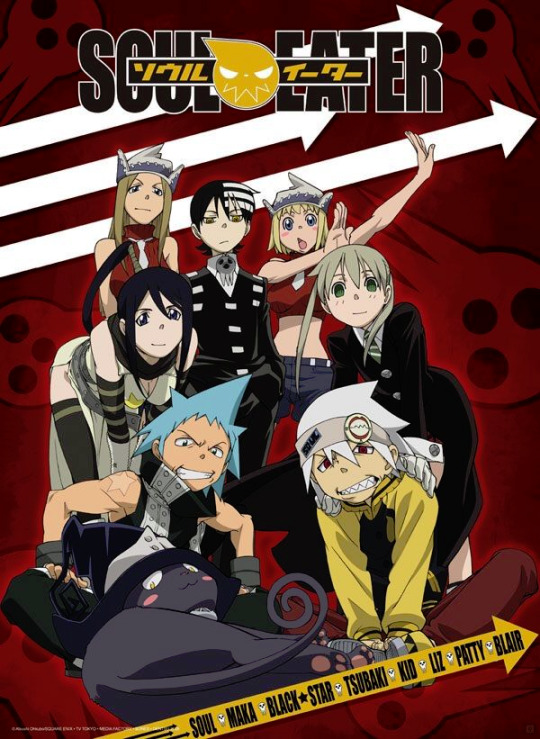
Number of episodes: 51. Language options: dub and subs available. Streaming availability: Netflix, Funimation. Soul Eater is yet another adaptation, this time of a manga by Atsushi Ōkubo, produced by Studio Bones, who also did the Fullmetal Alchemist animes, and is quite similar to the original FMA series in that it outpaced the manga and, rather than simply overloading itself with filler, decided to go in an entirely different direction by the end. The Death Weapon Meister Academy is a school founded by Death himself, dedicated to the training of Meisters, who wield Weapons, humans with the ability to shapeshift into weapons, for the purpose of destroying Kishin Eggs, evil beings who have consumed the souls of others, and pose the risk of transforming into extremely dangerous demons. Any Meister who can collect the souls of these corrupted beings, as well as the soul of a Witch, can transform their Weapon into a Death Scythe, the personal arms of Death. Among the students of the DWMA are seven Meisters and Weapons who stand out in particular: the teams of Maka Albarn, a kind hearted and responsible, though temperamental, girl, her Weapon, Soul “Eater” Evans, a laidback and snarky wannabe ��cool” guy, Black Star, a prideful and loudmouthed ninja who’s seemingly always out to make a spectacle of himself, regardless of how it hampers him, his Weapon, Tsubaki, a humble and levelheaded woman, Death the Kid, the son of Death and one of the top students in the cool, held back only by a crippling obsession with symmetry, and his Weapons, Liz and Patty Thompson. While these seven gradually come together as a team, a Witch named Medusa begins to put an ambitious and destructive plan into motion, one involving her “child”, Crona, and the strange, insanity inducing black blood that courses through their veins. Soul Eater has a lot going for it. A likeable and crazy cast of characters, even the side ones, like the maniacal Doctor Stein, or the surprisingly goofy and casual Death, or the tragic Crona, or the hilariously egotistical Excalibur, to a lot of fun action scenes, to its great animation and overall unique visual design, including the sun and moon having giant, creepy laughing faces. It has a lighthearted, comedic tone that doesn’t detract from the serious moments, and the main characters get some pretty good development as the series goes on. The dub is also great, with Laura Bailey as Maka, Micah Solusod as Soul, Brittney Karbowski as Black Star, and Todd Haberkorn as Death the Kid especially sticking out to me. In general, I don’t have a lot of significant criticisms, besides how the story is handled once the villainous organization Arachnophobia is introduced, which is also about where it begins to deviate from the manga. Most of the villains part of it never really feel like a threat, and the story becomes much more simple and typical compared to how the manga went, and when the ending arrives, it just kinda, happens, with several notable subplots just kinda left unfinished. It definitely feels like an underwhelming ending, and is a big reason why I place this lower on the list, but Soul Eater is still a pretty entertaining watch that’s worth a try if you want a decently lengthy, but not horribly long shonen. 2. The Melancholy of Haruhi Suzumiya
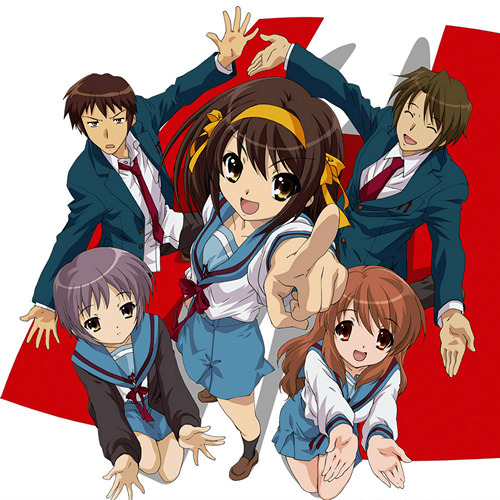
Number of episodes: 28. Language options: dub and subs available. Streaming availability: Funimation. Here we have the big one, an extremely memetic and famous series by Kyoto Animation, based on a series of light novels by Nagaru Tanigawa, a series that was finally completed back in November 2020 after its start in 2003. Kyon is a lazy and down to earth high school student who wishes for little more for himself than an uneventful, normal high school life- a hope that’s abruptly shattered when, on a whim, he becomes involved with Haruhi Suzumiya, an eccentric, hyperactive, and thoroughly self centered girl, who claims to have no interest in ordinary humans, and instead wishes to discover things thoroughly unusual, such as aliens, time travelers, or espers, and forces Kyon to form a club, the SOS Brigade, with her to achieve this. Haruhi quickly pulls three other students into the brigade, those being Yuki Nagato, a stoic and quiet bookworm, Mikuru Asahina, a shy and passive girl often subjected to humiliation and abuse by Haruhi, and Itsuki Koizumi, a calm transfer student who acts extremely subservient to Haruhi. While Kyon initially writes off the club as an unreasonable use of his time, his fellow members reveal an unexpected truth to him: the subjects of Haruhi’s fascinations actually do exist. Yuki is an alien, of a sort, created and controlled by an entity known as the Data Overmind, Mikuru is a time traveler from some point in the future, and Itsuki is an esper, and member of an organization of similar people. All three of them have been sent to observe the oblivious Haruhi, who appears to have the unconscious ability to change reality itself according to her desires, and is at threat of remaking the entire world if not placated. With Haruhi apparently having taken a unique interest in Kyon, he finds himself taken along for all sorts of supernatural adventures spawned from Haruhi’s whims. There’s a lot I could go on about regarding Haruhi, but in the interest of not turning this into a full on rant, I’ll keep shortish. It’s more or less an insane mishmash of several different genres, from slice of life, to science fiction, to fantasy, just depending on what each individual story feels like being. The episodes are mostly adapted from the early light novels, mostly the multiple stories from the third and fifth novels, The Boredom and The Rampage of Haruhi Suzumiya, respectively. It’s not often you’ll have any idea just what to expect from each individual episode, which makes the series very chaotic, but interesting. The characters are likeable and memorable, including the side characters, and the sheer ridiculousness of what goes on makes for many amusing moments. At the same time, the series is surprisingly complex, with many possible interpretations of its characters and the events they go through, furthered by the antics Kyoto Animation pulled when it was originally airing, such as airing the episodes out of chronological order, meaning the plot would often jump from the middle of an arc to something else. The end result is a very unique and enjoyable product, helped by the fantastic dub, with the actors capturing each character perfectly, from Crispin Freeman as the grounded and snarky Kyon, to Wendee Lee as the aggressively energetic Haruhi, to Stephanie Sheh as the gentle, yet secretive Mikuru. That said, there is one pretty disappointing part of it all, and that’s the second season, mostly thanks to the infamous Endless Eight arc, an eight part arc that’s more or less the same things happening over and over, with only the first and last episodes having anything noticeably different. Regardless of its own uniqueness, more than half the season is taken over by this, and something that may have worked if cut down to three or four episodes instead singlehandedly killed off the series’ goodwill. About the only redeeming factor of the second season is the five part adaptation of The Sigh of Haruhi Suzumiya, which has some of the funniest moments in the whole series. Overall, Haruhi is still a very fun series, and I’m really gonna have to watch its movie, The Disappearance of Haruhi Suzumiya, one of these days. 1. Trigun

Number of episodes: 26. Language options: dub and subs available. Streaming availability: Funimation, Hulu. Finishing off this list is an adaptation of a manga series by Yasuhiro Nightow, produced by Madhouse and another adaptation that overtook its source material. Compared to how Soul Eater handled it, however, Trigun went down much, much better, to the point Nightow himself had nothing but praise for how the anime turned out, and the series is generally considered one of the best animes of the late 90′s. On the harsh desert planet of Gunsmoke lives a wandering gunslinger known as Vash the Stampede, the “Humanoid Typhoon” with a large handgun known to leave tremendous destruction in his wake, who amassed a bounty of $$60,000,000,000 after destroying the city of July, leading to an endless trail of bounty hunters out to collect the price on his head. In the middle of all this, Meryl Stryfe and Milly Thompson, two representatives of an insurance society which is often forced to pay for damages caused by Vash, track him down for the purposes of minimizing the chaos he causes. Upon catching up with him, however, the duo discovers that, contrary to his reputation, Vash is a kindhearted goof, and self proclaimed hunter of love and peace, who absolutely refuses to ever take another person’s life, even at great personal risk to himself. Vash continues his travels carefree, helping out whoever he can, with the occasional assistance of Meryl and Milly, as well as a traveling priest known as Nicholas D. Wolfwood, only to one day have an encounter with a mysterious and cruel man known as Legato Bluesummers. Vash soon learns that Legato has hired a group of assassins known as the Gung-Ho Guns to kill Vash, and leave a trail of bodies wherever they go, seemingly for the sole purpose of tormenting Vash. As Vash hunts down Legato, he is gradually forced to face his past, and consider whether he can truly stay committed to his pacifist ideals. In general, Trigun is just a very, very well made series. It has a likeable and developed cast of characters, with special mention going to Vash, who is a very compelling and sympathetic character, and Wolfwood, who makes a great foil to Vash with very interesting development of his own, with characters outside of the main cast being memorable as well, from Legato himself, to even some of the more minor villains, such as the varied members of the Gung-Ho Guns, or Brilliant Dynamites Neon, who makes an inexplicably strong impression for a one off villain not even important to the overall plot. The space western setting is quite good, and the designs are great, with many villains having distinctive looks that further help them make an impression. The action is great, and the animation is also quite good, and has that 90′s anime charm. The dub, while a bit rough around the edges, is generally solid too. From Lia Sargent as the ditzy but kind Milly, to Dorothy Elias Fahn as the hotheaded Meryl, to Jeff Nimoy as the weary Wolfwood, to Richard Cansino as the calculating and disturbing Legato, with special mention needing to go to Johnny Yong Bosch as Vash. Despite it actually being his first voice acting role ever, he does a great job in portraying the many sides to Vash, and absolutely sells many of the biggest moments in the story. Speaking of which, the series started quite lighthearted and wacky, with the first four episodes actually being filler, but gets gradually darker as it goes on. The earlier episodes are still quite enjoyable on their own, though, and manage to slowly reveal new aspects to Vash in each one, before finally setting his nature in stone in episode 5. What really sells the series and makes it so memorable, however, are the themes it explores, of the practicality of unwavering pacifism, and whether taking a life, whether for heinous crimes committed without remorse, or with the purpose of protecting others, is ever justifiable. While quite a few series have touched dilemmas like this before, what makes Trigun stand out with it is the emphasis placed upon it throughout the whole series, with many episodes touching upon it in some regard. It genuinely fairly looks at the different sides of it all, and the consequences of each, with many emotional moments coming from it as a result. While the manga did ultimately take a very different turn from the anime, the anime actually preserves several of the most important plot moments, and manages to come to a satisfactory conclusion of its own regarding the themes. Ultimately, Trigun makes for a very fun and interesting watch that I highly recommend. And with that, my ranking is complete. With the exception of Robotics;Notes, I can pretty confidently recommend every show on this list. Got some more shows I plan to get through soon, so another ranking like this may be soon in the making. Either way, till next time. -Scout
#anime#trigun#nichijou#haruhi suzumiya#the melancholy of haruhi suzumiya#soul eater#robotics;notes#long post
39 notes
·
View notes
Photo

Daily “Nichi-Uchu”(Nichijou uchuujin) SS
『東雲校長と教頭』 Principal shinonome & Vice-principal
Mio”Well,It’s funny. I’ll try to draw next manga in that direction.”
…
しょっぱながよりによってこれかよ
6 notes
·
View notes
Text
Review: Nichijou - My Ordinary Life

“ Nichijou primarily focuses on the daily antics of a trio of childhood friends—high school girls Mio Naganohara, Yuuko Aioi and Mai Minakami—whose stories soon intertwine with the young genius Hakase Shinonome, her robot caretaker Nano, and their talking cat Sakamoto. With every passing day, the lives of these six, as well as of the many people around them, experience both the calms of normal life and the insanity of the absurd. Walking to school, being bitten by a talking crow, spending time with friends, and watching the principal suplex a deer: they are all in a day's work in the extraordinary everyday lives of those in Nichijou. “
A long time coming! Of course, I’ve seen insane clips of this series over the years, but it wasn’t until now that I sat down to just watch the series. As a show the episodes can include hit or miss material so overall the experience was surreal. I can’t say it was necessarily good or bad, but let’s save that for...
Criticisms:
I feel like a ton of jokes get lost in translation. I can hear alliterations or words that sound similar being used in the Japanese audio that just don’t seem to be translated over. This really came to a head when I tried to watch the English dub (starting around episode 4, so I could watch and do my nails at the same time). Once you have to truly translate all the dialog into English the effect is even worse; the professor stops being professor and is just called by her last name or scenes where it seems like there should be more dialog are instead left with empty silence because all the English has already been spoken, ect. I just wish I could learn Japanese faster so I could enjoy the show a bit more... That’s more of a ping on me then the show, then, huh?
The over the top action is incredible, but after getting 25 episodes deep I get a bit desensitized to it unfortunately.
Literally anything Mai does or says is completely beyond me... Is that the joke?
I thought Helvetica Standard was just some fun addition, but after doing research I found out it’s another manga by Arawi-sensei?! So... confused!?
Positives:
The animation is bombastic. The way they’ve chosen to represent scenes and emotions is revolutionary and, I’m sure, shaped anime in innumerable ways.
When the comedy is on, IT IS ON. It has you rolling on the floor laughing. I know the show shifts into the surreal a lot, but some of the best segments are the ones that really take that everyday setting. It’s like they take these minor mishaps that can happen to anyone and the surreal response is just a manifestation of emotions that we feel inside. It’s so raw and human.
No perv pandering so good
Also it would be an injustice for me to put screen-caps of anything in this review because anything other than just watching the segments is just an injustice. That being said, I think I can screen-cap my verdict, since it has little to do with the scene itself, but perfectly sums up my opinion of the show...
Verdict:



#if you're thinking what? what?!#That's the show#it's incomprehensible but in a funny way#Nichijou#Nichijou - My Ordinary Life#anime#review#me#anime review
12 notes
·
View notes
Photo










Started DREAM!ing at midnight, so technically started it on my birthday! XD;;
Though it asks you to enter a username, it seems like you are basically Yuma Mochizuki (the boy with the dark blue hair). Does that mean this is actually a BL game? Well, the blond guy does fall for the trap.
Anyway, you are Yuma. You’re from the countryside where you lived with your granny, and you sometimes slip into your regional dialect, like saying ‘aigato’ instead of ‘arigato’. This is your first time in Tokyo and you’ve come to attend this super elite high school called Shinonome that admits the creme de la creme of various different fields. And here I’m like Hope’s Peak?? Is this DR but much much happier??
Anyway, you get lost but manage to find a friendly policeman to drive you there. At the entrance is this super annoying announcer guy and a crowd of people waiting to see which celebrity or elite is starting school there. No one knows who you are… and are disgusted by your unsophisticated appearance…
You enter the school. In the courtyard, you see a guy with peach hair lying face down on the ground with a knife in his back! You panic! He’s fine though and asks if you’re all alone then asks you to remove the knife for him. You oblige. He walks off as if everything is fine and dandy, though there’s a hole in his back…
You meet some of the other students. Nito (with orange hair, voiced by Natsuki Hanae and is basically Senbura!Hideyoshi!) is a stage actor, very friendly and immediately announces that you’re new BFFs! XD Then Touji (the blond) who is the son of the prime minister or something asks if you’re a servant as he already misses having servants… Anyway, they ask what you’re famous for. You say you have no idea and that you aren’t special at all. However, you eventually realize that you’ve probably been admitted coz you’re really good at drawing manga! XD But it sounds like you’re kind of a ghostwriter mangaka who draws manga for others or something. Guess that’s why no one’s heard of you…
The bell chimes. Everyone rushes to the hall for the opening ceremony but all you see are beds! The rather bored teacher takes attendance and pronounces everyone’s names wrong! Can’t blame him as it is difficult to tell how a name is pronounced from kanji alone. He calls Touji ‘Fujiji’ and Nito decides that’s hilarious and what he’ll call him from now on! XD
The students all ask what is going on but the teacher won’t give them a straight answer. Then the principal gives an announcement on a big screen. He explains how they are trying out this new system this year where all students will need to form teams of two to complete in ‘lives’ as a means of improving their interpersonal bonds and increasing their ‘charisma’. Everyone is confused but before they can ask more about this, everyone is knocked out with sleeping gas!
In the dream world, a duo of senior students (peach hair and long pink hair) perform a ‘dream live’ for all the first years. Everyone is very impressed with it. Then Nito screams because there’s an arrow through Touji’s chest! Everyone freaks out but Touji doesn’t feel any pain, yet no one dares pull the arrow out for him. Anyway, the teacher appears and explains how this is all just a dream and that Touji can will the arrow away. Touji does as he’s told and the arrow disapperas, but then pink hair speaks to him and more arrows appear on his chest plus hearts! Touji is in love~ XD And this is where the prologue story ends and the tutorial goes onto the other parts of the game. It’s basically similar to other raising/training games like EnStars, A3 & Anidol, so if you’re familiar with those, you’ll have no problem figuring out what to do.
There is a 'lesson’ function where you choose two characters to do stuff together to increase their bond. If you choose two cards with the target element shown next to the number of turns left, you get more gem things. The bonding thing fails if you choose the same character. The animation at the start of each lesson is really cute~! Your team leader goes to sleep as all this training happens in the dream world! There is also a 'battle’ function where your team competes with another team.
One special thing is the 'live viewing' function. You get to see MVs of the songs you’ve unlocked and the MVs apparently change according to the two characters you choose to star in it! If you press the ’?’, it shows you all the possible combinations. It uses 'live tickets’ that you get from 'battles’ I think. Can’t remember exactly.
So, you get enough gacha points in the beginning for a 10 pull of the gacha. Did not get any SSRs… but did get a Shigure card. Then I quickly completed all the newbie challenges and got another chance for a 10 pull. Again no SSR… but got Shigure looking scary with a kitchen knife!! He and i7!Sogo will get along just fine~!
Oh, and you can set two cards as your home screen, so I went with Shigure and Nito.
45 notes
·
View notes
Text
Nichijō and the humor of the absurd
Nichijō is a comedy manga created by Keiichi Arawi that begins its serialization in December 2006 in Shōnen Ace magazine. This had an anime adaptation in 2011 by Kyoto Animation studio, which consisted of a 26-episode season.
The series tells the side story of two triads of characters, which are first made up of students Yuuko Aioi, Mio Naganohara, and Mai Minakami, as well as Hakase Shinonome, a 10-year-old scientist, Nano Shinonome, a teenage robot created by Hakase. and Sakamoto, the cat that can talk.
The plot revolves around them and their daily life, which is not very common, due to the large number of absurd adventures they live, which can range from the most normal, such as taking an exam, to the most extravagant that may be see the fight between the principal of his school with a deer, but always with a touch of exaggeration and drama that manages to give the series a unique and peculiar aspect.
Even before watching this anime, I was not a fan of the comedy that the Japanese used, I found it somewhat repetitive and uncreative, but this anime managed to attract my interest from the first moment, with a very varied and charismatic cast of characters, with a excellent animation and a color palette that I had not seen before in another anime, with increasingly absurd stories than the previous one and despite the fact that the plot does not have a great development, characters like Nano manage to evolve throughout the chapters.
This anime is a great laugh and enjoy that I recommend 100%.
0 notes
Text
Hachigatsu no Cinderella Nine TV Anime Hits TV Tokyo in April of 2019
Some new details have been revealed about the Japanese TV broadcast of Hachigatsu no Cinderella Nine ("Cinderella Nine in August"), an upcoming TV anime based on the sports simulator / light novel smart phone game about a group of young ladies coming together to form a winning baseball team. The series will broadcast on Tokyo MX, AT-X, and other stations beginning in April of 2019.
youtube
Additionally, the first episode will be previewed at a special live-event entitled "Hachinai Spring LIVE 2019", which will be held on April 06, 2019, at the Yamano Hall venue in Shibuya, Tokyo, Japan.
The event features the principal voice actresses for the series as guests, including Nozomi Nishida (role: Tsubasa Arihara), Reina Kondō (role: Ryo Shinonome), Saki Minami (role: Yuuki Nozaki), Honoka Inoue (role: Tomoe Kawakita), Haruka Shiraishi (role: Kana Tsukumo), Rika Tachibana (role: Aoi Asada), Iori Seiki (role: Maiko Kurashiki), Madoka Asahina (role: Chikage Honjo), and Noriko Shibasaki (role: Shizuku Tsukahara).
The "Hachinai Spring LIVE 2019" has an afternoon performance at 2:30 PM JST and an evening performance at 6:00 PM JST. Tickets to the event range in price from 6800 yen ($62.10 US) including tax for general admission to 8900 yen ($81.28 US) including tax for the deluxe package with bonus goodies.
The original Hachigatsu no Cinderella Nine smart phone game is published by Akatsuki and Kadokawa. The Hachigatsu no Cinderella Nine TV anime is directed by Susumu Kudo and features animation production by TMS Entertainment.
Source: MoCa
---
Paul Chapman is the host of The Greatest Movie EVER! Podcast and GME! Anime Fun Time.
0 notes
Text
Week 2: Genres
So with the hard stuff out of the way, this week we can talk about genres. In anime and manga there can be multiple forms in just one story but there is always a primary genre that forwards the story. Some examples will be posted below.
Shōnen manga is typically characterized by high-action, often humorous plots featuring male protagonists. The camaraderie between boys or men on sports teams, fighting squads and the like is often emphasized. Main characters may also feature an ongoing desire to better themselves.
Such manga often portray challenges to the protagonist's abilities, skills, and maturity, stressing self-perfection, austere self-discipline, sacrifice in the cause of duty, and honorable service to society, community, family, and friends.
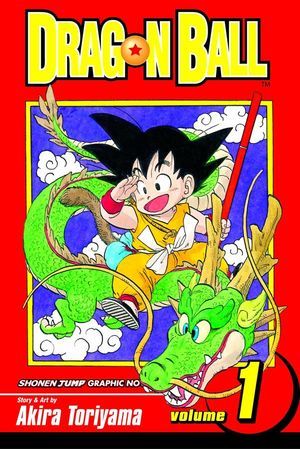
Considered the “Grandfather” of all Shounen Anime and Manga. Imitated quite heavily by Millennials.
Shōjo or shoujo manga is manga aimed at a teenage female readership. The name romanizes the Japanese 少女 (shōjo), literally "young woman". Shōjo manga covers many subjects in a variety of narrative styles, from historical drama to science fiction, often with a focus on romantic relationships or emotions. Strictly speaking, however, shōjo manga does not comprise a style or genre, but rather indicates a target demographic. Basically it can be of any manga style as long as romance plays a focus.
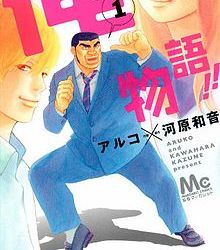
Cover of the first volume of My Love Story!! as published by Shueisha. The story follows Takeo Gōda, a tall and muscular student who doesn't have much luck with women, as every girl he likes ends up falling for his best friend, Makoto Sunakawa, who is charming and good-looking. This all changes when he saves Rinko Yamato, a petite shy girl who, above all other expectations, falls in love with Takeo, beginning a unique love story.
Magical girls (also known as mahou shoujo or majokko) is a subgenre of Japanese fantasyanime and manga which feature girls who use magic. Two popular magical girl animes during the 90′s were Sailor Moon and later Cardcaptor Sakura.

The first volume of Cardcaptor Sakura, published in Japan by Kodansha on November 22, 1996 featuring Sakura Kinomoto.
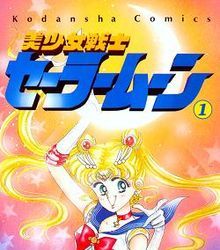
First tankōbon volume, released in Japan on July 6, 1992.
Seinen manga are manga marketed to adolescent boys and men old enough to read kanji. In Japanese, the word "seinen" literally means "youth", but the term "seinen manga" is also used to describe the audience of comics like Weekly Manga Times and Weekly Manga Goraku which are aimed at men into their 50s.
Seinen manga can focus on action, politics, science fiction, fantasy, relationships, sports, or comedy and while they may contain sexual content (as well as other mature material), it remains predominantly more infrequent than in the seijin-muke manga (Hentai).
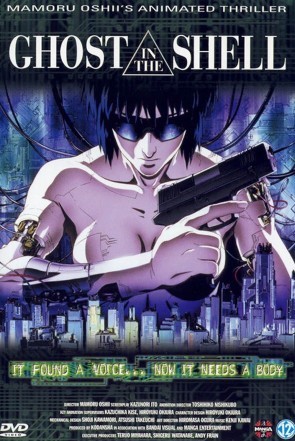
A popular Seinen manga that just recently released a western live action release.....
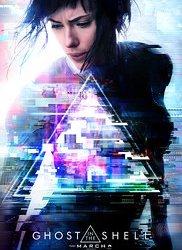
with Scarlett Johansson as the lead. Another example of whitewashing in american films but lets not get into that.
Josei manga are Japanese comics aimed at women in their late teens on into adulthood. Josei manga are distinguished from "shōjo manga" (少女漫画) for younger girls on the one hand, and "ladies comics” or "LadyComi", which tend to have erotic content on the other. Readers can range in age from 15 to 44. In Japanese, the word josei means simply "woman", "female", "feminine", "womanhood", and has no manga-related connotations at all.
Josei comics can portray realistic romance, as opposed to the mostly idealized romance of shōjo manga, but it does not always have to be. Josei tends to be both more sexually explicit and contain more mature storytelling, although that is not always true either. It is also not unusual for themes such as infidelity and rape to occur in josei manga targeted specifically more towards mature audiences.
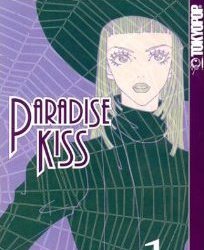
Synopsis: Yukari is a spirited high school senior in the process of studying for her college entrance exams. Sadly the prospect of subjecting herself to a meaningless dull life leaves her feeling depressed about the future. In a bout of frustration, Yukari begins to ignore her courses and she begins to hang out with a group of fashion design students. But what Yukari doesn't know is that this circle is known as Paradise Kiss, and they are run by a pair of young designers already making their mark on the Asian scene. Furthermore, while her life is going to soon change, it will not be due to the elite political or commerce based future her family may have hoped for, instead her life may eventually be set in a world of high fashion, with her strutting down the catwalk as the face of Asian fashion!
The common use of the term "slice of life" as a genre of anime and manga borrows from the theatrical meaning of the term, but also from the distinct literary meaning of the slice of life narrative technique. While "slice of life" is sometimes used to refer to anime and manga with realistic situations and dialogue, as in the theatrical and film sense, it is more commonly used to refer to episodic series which lack an overarching plot, conflict and ending, regardless of the surreality or realism of the setting itself, suggesting that the term's origin here derives more from the literary terminology rather than the theatrical terminology. Themes usually range from teen coming-of-age, interpersonal relationships, family, romance, to fantasy and science fiction. A common trait in slice of life anime and manga is their emphasis on seasonality or procedures. These usually dipict average daily lives of people in a set plot or story and usually accompanies another prominent genre.
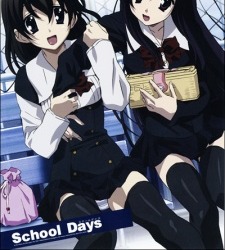
Synopsis: High school student Makoto Itou first notices Kotonoha Katsura at the start of his second semester, freshman year. Immediately, he becomes entranced by her beauty, but his bashfulness doesn't allow him to approach her, even though they ride the same train every day. Instead, he snaps a photo of her in secret and sets it as his cell phone's wallpaper: a charm that, if kept under wraps, would supposedly help you realize your love. However, classmate Sekai Saionji spots the picture, but instead of ratting him out, she offers to help set him up with Kotonoha—going so far as befriending her just for him. Thus, the trio begins a rather impromptu friendship.
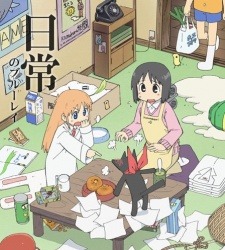
Synopsis: Nichijou primarily focuses on the daily antics of a trio of childhood friends—high school girls Mio Naganohara, Yuuko Aioi and Mai Minakami—whose stories soon intertwine with the young genius Hakase Shinonome, her robot caretaker Nano, and their talking cat Sakamoto. With every passing day, the lives of these six, as well as of the many people around them, experience both the calms of normal life and the insanity of the absurd. Walking to school, being bitten by a talking crow, spending time with friends, and watching the principal suplex a deer: they are all in a day's work in the extraordinary everyday lives of those in Nichijou.
Harem (ハーレムもの hāremumono; "from harem"?) in anime and manga is an emphasis on polygamous or love triangle relationships characterized by a protagonist surrounded amorously by three or more members of either the same and/or opposing gender, sex, and/or love interests.
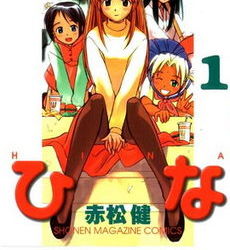
Cover of volume 1 of the Japanese version of “Love Hina”. Example of a Female Harem.

The cover of the first volume of Ouran High School Host Club, with Haruhi (left) and Tamaki (right). Example of a Male Harem.
Other than traditional Japanese genres there are others like Suspense, Thillers, Occult, Comedy,etc.
Ecchi is an often used slang term in the Japanese language for playfully sexual actions. As an adjective, it is used with the meaning of "sexy", "dirty" or "naughty"; as a verb, ecchi suru (エッチする), with the meaning to have sex; or as a noun, to describe someone of lascivious behavior. The word ecchi has been adopted by fans of Japanese media to describe works with sexual overtones. In Japanese, the word ecchi is often used to describe a person's conduct, but in fandom, it has come to be used to refer to softcore or playful sexuality.
Works described as ecchi do not show sexual intercourse or genitalia, but sexual themes are referenced. Ecchi themes are a type of fan service, and can be found in most comedy shōnen and seinen manga and harem anime. This term and themes are used a lot in anime and manga.
I would mention Yuri, Yaoi and Hentai but will leave these links if you want to explore further but they tend to deal sexual themes. With “Yuri” dealing with girl on girl and “Yaoi” dealing with guy on guy.
0 notes







